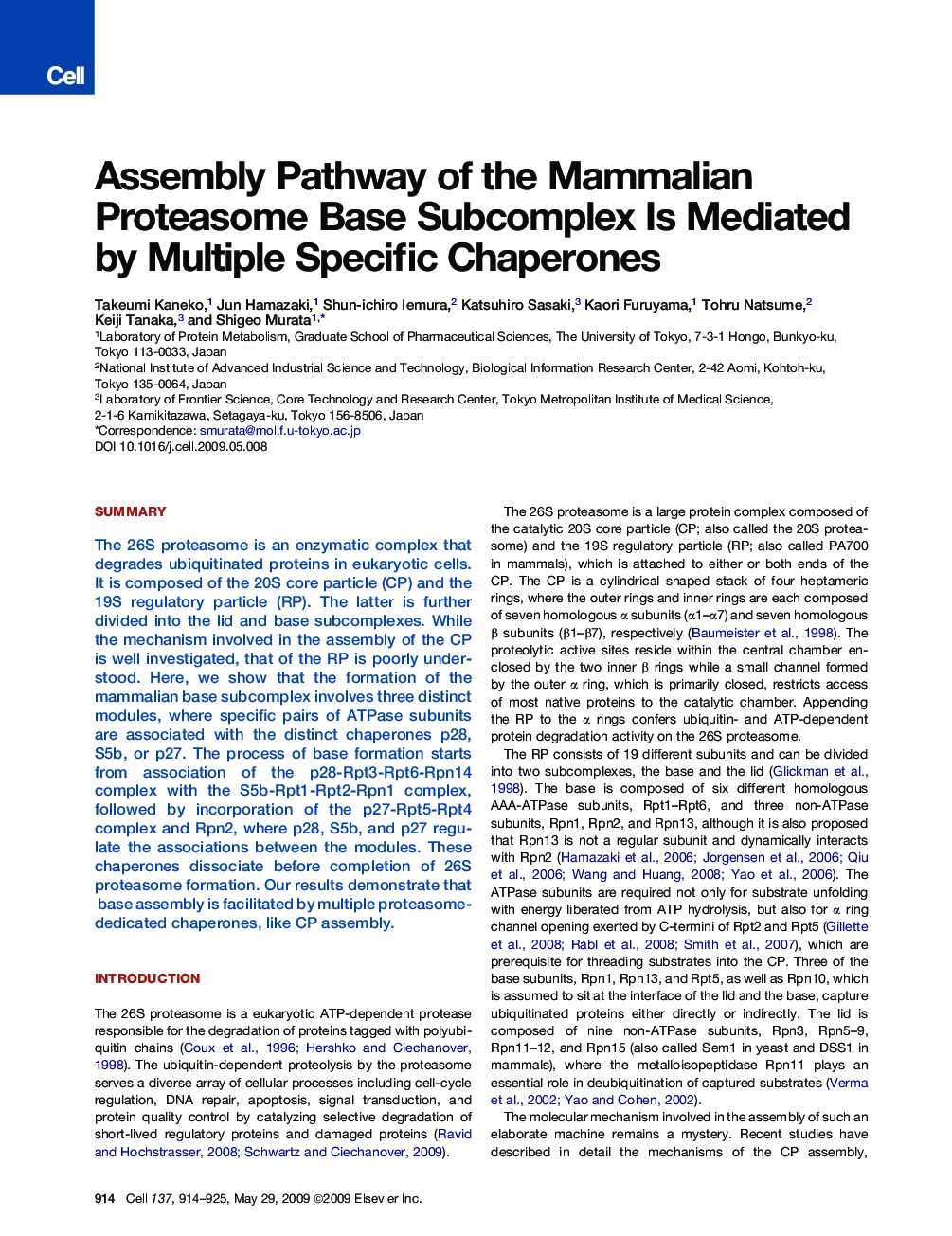| Article ID | Journal | Published Year | Pages | File Type |
|---|---|---|---|---|
| 2036651 | Cell | 2009 | 12 Pages |
SummaryThe 26S proteasome is an enzymatic complex that degrades ubiquitinated proteins in eukaryotic cells. It is composed of the 20S core particle (CP) and the 19S regulatory particle (RP). The latter is further divided into the lid and base subcomplexes. While the mechanism involved in the assembly of the CP is well investigated, that of the RP is poorly understood. Here, we show that the formation of the mammalian base subcomplex involves three distinct modules, where specific pairs of ATPase subunits are associated with the distinct chaperones p28, S5b, or p27. The process of base formation starts from association of the p28-Rpt3-Rpt6-Rpn14 complex with the S5b-Rpt1-Rpt2-Rpn1 complex, followed by incorporation of the p27-Rpt5-Rpt4 complex and Rpn2, where p28, S5b, and p27 regulate the associations between the modules. These chaperones dissociate before completion of 26S proteasome formation. Our results demonstrate that base assembly is facilitated by multiple proteasome-dedicated chaperones, like CP assembly.
